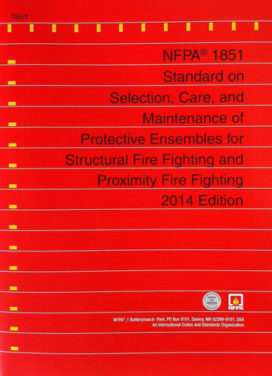Risk Assessment: A Must for All Those Involved in Selecting PPE

While risk assessments aren’t anything new, they also aren’t exactly commonplace with the majority of fire departments in North America. As fire departments become more educated on the benefits of doing a risk assessment and the liability involved in not doing one, expect to hear the buzzword “risk assessment” more and more when new personal protective equipment (PPE) purchases are involved.
Before we examine what a risk assessment is, let’s explore three of the reasons it is important:
- A risk assessment ensures the fire department has explored all of the specific risks (dangers) involved in the duties of a particular job and can therefore properly specify and outfit first responders with the appropriate PPE.
- A risk assessment is a legal document that justifies why the fire department is specifying particular PPE. In many cases, a purchasing department may select the low bid vs. fulfilling the specified PPE, which isn’t exactly what the fire department requested. A risk assessment can aid the fire department in convincing purchasing to choose the bid that adheres to its specification (derived from the risk assessment) as opposed to low bid…justification for the specification is supported by facts and data.
- A risk assessment is one of the first things OSHA will ask for when they come to investigate an injury, an accident, or worse— a fallen firefighter. If a proper risk assessment has been completed, the process with OSHA will be much smoother vs. the department that did not complete one.
What is a Risk Assessment
A risk assessment is a document created by a fire department as described in NFPA 1851 (Chapter 5) and in accordance with
OSHA 1910.132 (d). The purpose of this document is to ensure organizations (a fire department for example) have fully investigated the risks associated with the worker’s job (a firefighter for example) and in turn provided the proper PPE.
NFPA 1851 is the Standard Guide on the Selection, Care, and Maintenance of Protective Ensembles for Structural Fire Fighting and Proximity Fire Fighting established by NFPA.
Chapter 5 of NFPA 1851, 2014, states that a risk assessment must be performed, including the following considerations written in section 5.1.2:
- Types of duties performed
- Frequency of use
- Organization’s experiences
- Geographic location and climate
- Incident operations
- Likelihood of Chemical, Biological, Radiological and Nuclear (CRBN) terrorist incident
OSHA (Occupational Safety and Health Administration), part of the United States Department of Labor, gives the following as the instruction on performing a risk assessment in OSHA 1910.132 (d):
- OSHA 1910.132 (d)
Hazard assessment and equipment selection.- OSHA 1910.132 (d) (1)
The employer shall assess the workplace to determine if hazards are present, or are likely to be present, which necessitate the use of PPE. If such hazards are present, or likely to be present, the employer shall:- OSHA 1910.132 (d) (1) (i)
Select, and have each affected employee use the types of PPE that will protect the affected employee from the hazards identified in the hazard assessment; - OSHA 1910.132 (d) (1) (ii)
Communicate selection decisions to each affected employee; and, - OSHA 1910.132 (d) (1) (iii)
Select PPE that properly fits each affected employee. Note: Non-mandatory Appendix B contains an example of procedures that would comply with the requirement for a hazard assessment.
- OSHA 1910.132 (d) (1) (i)
- OSHA 1910.132 (d) (1)
Both NFPA 1851 and OSHA 1910.132 (d) are delivering the same message—a risk assessment should be done for any person where risks to health and safety are involved…obviously first responders fall into this category.
Writing a risk assessment can be done in a few ways. First, there is no “right” or “wrong” way to do a risk assessment. A risk assessment can be 5 pages or it can be 50 pages depending on how much information and data is included. An outline is always a good place to start and for the most part this has already been done in Chapter 5 of the NFPA 1851 standard. From here, fire departments can do everything on their own or they can look at risk assessments done by neighboring departments or large metro cities. Safety Components has a few thorough risk assessments done by some of the largest metro cities in the US for reference—email us if you want one.
The key is to do a risk assessment. By doing a risk assessment, the department may uncover previously unknown risks to its first responders…reshaping the type or performance of the PPE being purchased; the fire department may have a better chance at getting the PPE they want vs. low bid; the department and those involved in specifying PPE will be better covered if an accident occurs (less headaches with OSHA). For many reasons, performing a risk assessment is something every fire department should do.
